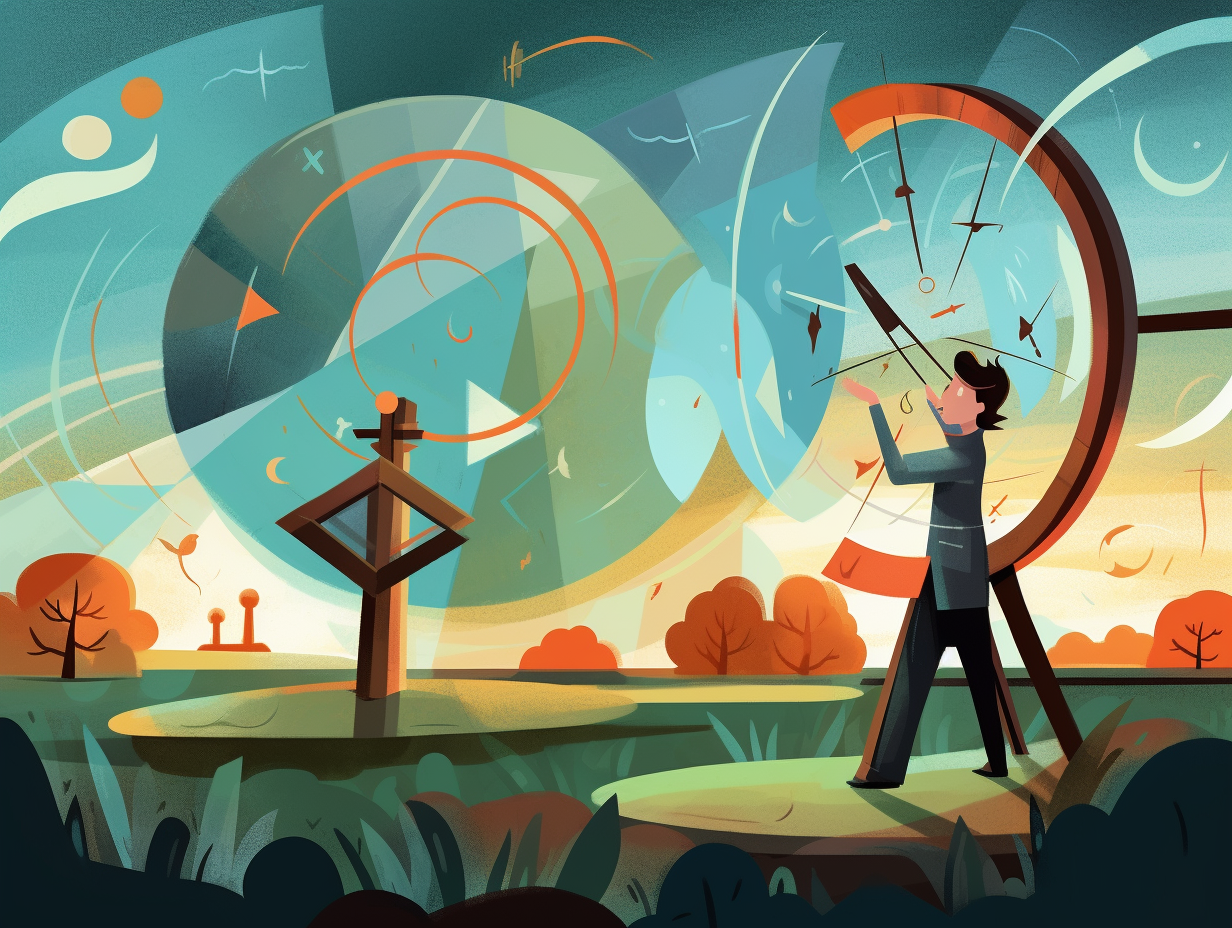Discover Timeless Wonders: Top 11 Fascinating Fun Facts About Sundials You Didn't Know

1. Ancient Egyptian Pocket Watch
Who needs a pocket watch when you've got an ancient Egyptian sundial on hand? Talk about a trendy throwback accessory: The world's first portable sundial was developed by the ancient Egyptians around 1500 BCE, setting the stage for later advancements like hemispherical dials and merkhets, offering even greater precision in timekeeping.
Source => nist.gov
2. Sundial Party Planner
Tick tock, it's sundial o'clock: The oldest known sundial was created in ancient Egypt around 1500 BCE under the reign of Thutmosis III, boasting a simple L-shaped stone design that was handy for scheduling religious rituals and essentially making it a sun-worshipping party planner.
Source => sciencemuseum.org.uk

Did you know that a quirky 1920s invention called the Shortt-Synchronome clock once ruled the timekeeping world with its incredible accuracy of just one second per year? Discover how this fascinating mechanism and its free pendulum in a near-perfect vacuum paved the way for today's atomic clocks!
=> Fun Facts about Clocks
3. Vintage Clock Bling
Before smartphones made time a slave to our pockets, our ancestors rocked vintage clock bling with a flare for fancy: pocket sundials from the seventeenth century were equipped with embedded compasses to accurately tell time when pointed in the right direction, made from materials such as brass, ebony, mother-of-pearl, and even ivory, with some models sporting legs to hold them up for easy reading on surfaces.
Source => kellysearsmith.livejournal.com
4. Phar-time's Giant Sundial
Before the invention of "time" as we know it, sundials ruled the roost like an ancient Egyptian Phar-time: In the city of Heliopolis, they discovered a sundial so large it spanned over 30 meters (98 feet) across, making it one of the biggest timekeepers in history!
Source => en.wikipedia.org

5. Sun-powered Rolex Showdown
When time was truly "set in stone", ancient folks had their own versions of a sun-powered Rolex: In Egypt, vertical gnomons cast shadows on circular plates while Greece preferred horizontal gnomons on semi-circular plates, modeling their sundials based on location and a keen sense of aesthetics.
Source => thewonderofscience.com
6. Analemmatic Sundial Weight
Ever wondered if sundials have any body image issues? Fear not – there's no Weight Watchers for sundials! Analemmatic sundials, however, are the unconventional timekeepers with a twist: They use a vertical gnomon and elliptical shape for accuracy. The gnomon's daily position shift ensures the time remains on point, while the ellipse size is dictated by its location and the sun's inclination rather than any weight-loss tricks!
Source => en.wikipedia.org
7. Sundials: 5,000-year Time Machines
Before Doc Brown had a DeLorean and the Time-Turners graced the halls of Hogwarts, there was a contraption patiently counting the sunny hours, one colossal shadow at a time: sundials have been our trusty time machines for over 5,000 years, with the earliest one dating back to ancient Egypt around 1500 BCE.
Source => myfrugalhome.com
8. Seasonal "Temporary Hours"
When we say it's "time to soak up some sun," we're not just talking about tanning at the beach: Sundials, believed to have originated in Egypt around 3500 years ago, actually used the position of the sun to divide the day into 12 "temporary hours." These hours changed with the seasons, making an hour in summer twice as long as an hour in winter – quite the loophole for procrastinators in the British Isles! Astonishingly, until the end of the 19th century, sundials were even used to regulate clocks in the French railways. Today, you can marvel at this ancient timekeeping device on display at the Royal Observatory, Greenwich.
Source => rmg.co.uk
9. Sundial Customization 101
A sundial's motto could easily be "location, location, location... and a sprinkle of personal flair": these antique timekeepers need to be customized based on their latitude, longitude, and time zone for accuracy, and they often sport unique engravings for that extra touch of personality. Don't forget the precision-crafted gnomen – that little triangle on top playing shadow games – making sure the sun never sets on their time-telling prowess!
Source => makezine.com

10. Sundial's Nighttime Stumble
When people say "time flies when you're having fun," sundials simply can't clock in on the after-hours fiesta: Sundials rely on the sun casting shadows to tell time, leaving them snoozing on the job at night, while moondials take over tracking the moon's position to determine the nighttime hours.
Source => wikihow.com
11. Be a Human Sundial
Step right up and become a time-telling human sundial: Analemmatic sundials can transform people into a "gnomon" by having them stand on the corresponding zodiac point in a public garden or playground, allowing their shadow to reveal the local time on an ellipse up to ten meters wide. The oldest known example dates back to 1530 and is located at the churchyard at Bourg-en-Bresse.
Source => sundials.org
Related Fun Facts




















